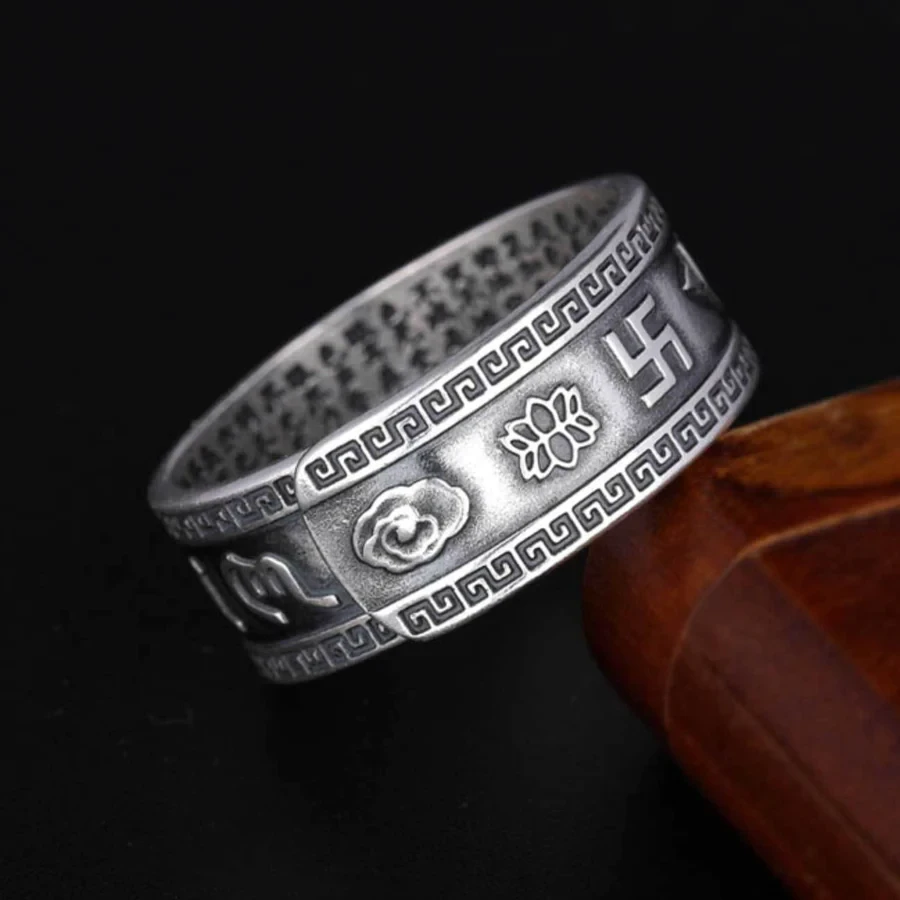The Swastika symbol is most well-known as a symbol used in the Nazi flag. But long before that, it has a rich history and a deep meaning to Buddhists.
In this article, we will explore the meaning of the Swastika symbol before it got used as an emblem of hate. We will discuss why so many people also use the sign in many parts of the world.
We will offer a more detailed explanation of its modern use. For instance, the engravings on this Feng Shui Pixiu Mantra Ring bear this potent symbol.
But first, let’s learn about the swastika’s origins. Let’s dig deeper into the reasons why so many religions and spiritual activities make use of it.
Swastika Meaning in Buddhism
The swastika used in Buddhism stands in opposition to the symbol of hate it holds today. In contrast, it symbolizes harmony, peace, and well-being.
From the Sanskrit ancient term Svastika, we would get the word Swastika. “Su” means good,” “asti” denotes “to be” (happiness, fortune), and “ka” serves as a suffix.
The symbol represents the Buddha’s footsteps in Buddhism. In fact, it embodies the dharma wheel, also known as the wheel of law. The dharma is the road to enlightenment and nirvana according to Buddhist teachings.
The swastika was also utilized by Buddhists to show the start of their texts. They view it as a representation of omnipotence, fortune, and diversity.
The left-facing variant of the Buddhist swastika sign bears the colors gold, yellow, or red. Further definitions of luck, dharma, abundance, and eternity can also be drawn from it.
Swastika and the Buddha
In total, 65 auspicious symbols cover the footprint of the Buddha. And many believe that the swastika is the first one drawn in it. We can also see the symbol all over Buddha’s body; palms, chest, and feet.
It holds such a significant place in the Buddhist tradition to reach enlightenment. You can find this emblem everywhere you go. This includes temples and monasteries where monks spend most of their lifetime.
The meaning of the Swastika varies depending on where in the world you are. For example, the swastika is referred to as “The Seal on Buddha’s Heart” by Buddhists in India.
Also, Buddhists use the counterclockwise swastika to represent how the ego is destroyed. In Buddhism, the ego holds the source of all issues among men. That’s why dissolving the ego is a needed step to be like the Buddha and to reach nirvana.
How to Use the Swastika Symbol
The swastika has a long history of use in many cultures. It has a noble meaning, so much so that it appeared in many aspects of people’s lifestyles.
The use of it in ancient civilizations reflected on coins, blankets, and even tombstones. The swastika symbol can also be seen in African and Asian ancient pottery excavated by archeologists.
The swastika is also a big hit in architectural use. It was incorporated into household items and sacred objects like crucifixes. It is also seen in murals and temples. This is possibly due to the Sanskrit word “swasti” which translates as “blessed” in English.
The Swastika in Jewelry and Fashion
The negative connotation attached to the Swastika is now getting better. Modern Tibetan Buddhists use it as clothing decoration and in pieces of jewelry, similar to how the symbol was used in the past.
Its common use is to apply it as a single element for accent. But it can also be used as interlocking swastikas, as was typical in Roman-era designs.
This modern use of the symbol only means that it is still seen as a representation of harmony, fortune, and well-being.
To reclaim the symbol, several jewelry brands and retailers showcase Swastika pendants. Some rings and necklaces also feature the design, usually manufactured in white, silver, and gold to highlight its beauty.
Takeaway
The beauty of the swastika symbol got tainted over the last century. Still, it holds an important meaning in Buddhism and many other religions. It is still regarded as a sacred and beloved emblem of well-being, luck, and peace.
It is sad that for some people, the horror connected to the swastika will always be present. But there is still an uplifting feeling that we can look beyond it and reclaim its original meaning.
Do you own any charms with the swastika symbol? We’d like to know your experiences with it in the comments below.

